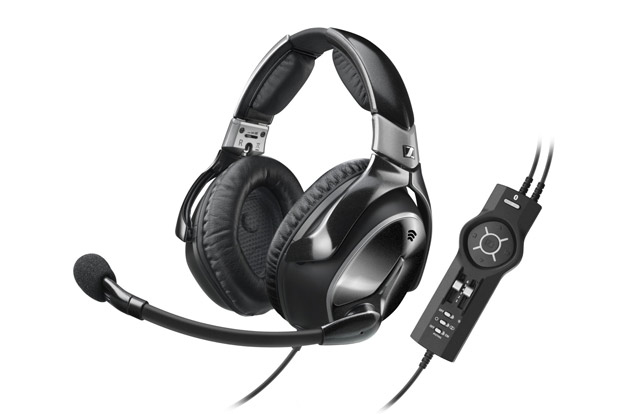Pilot Products
Quiet on the flight deck

Sennheiser S1 Digital adaptive headset
Headsets are personal. You can easily start an argument on which are the best, and reading online reviews only fans the flames. Active noise reduction (ANR) headsets are worth the money if you are flying more than a few hours a year, especially in high-density traffic or IFR.
Most ANR sets cost about three to four times more than a passive headset—in the $800 to $1,000 range. But when the noise-cancelling feature is demonstrated to the uninitiated, there’s usually a smile and quiet appreciation. The com never sounded so good. Bose, David Clark, Lightspeed, Sennheiser, and Telex are significant ANR players. The technical audio aspects appeal to engineers, but the bottom line is how well does it work for you—and is it comfortable after several hours?
Audiophiles know Sennheiser—founded in Germany in 1945—for high-quality audio products. Its first step into aviation began in 1980, providing headsets for Lufthansa. About 14 years ago it ventured into the GA market. I tested an early model and liked it so well that my wife bought it for me. That’s love!
The latest iteration is the S1 Digital and, as you’d expect, it’s the best yet. What could possibly be different? Most of us wear glasses of some type, sun or otherwise, and the earpieces typically are squeezed under the earcups. Sennheiser figured out how to reduce that pressure point and created adjustable clamping pressure to let the pilot customize. I had no discomfort after several three-hour legs.
The big change is the adaptive noise canceling function. Pilots operate in a dynamic frequency environment: the noise attributes at takeoff are different than at cruise or landing. By just touching a button on the left ear cup, the system measures the ambient noise level and adjusts to the current racket. It’s immediately noticeable and, according to the company, saves battery power. There’s also an optional adapter to plug into ship’s power.
Those of us who hang around airports often lose some of our high-frequency hearing. Sennheiser lets pilots customize high frequency response for either ear.
Finally, there’s a Bluetooth connection. At airports without a remote communication outlet (RCO), getting an IFR clearance by phone can be a hassle.
With the Bluetooth feature, start the engine, load the GPS with whatever you think the clearance might be, and perhaps do the run-up before merely pushing a button on the S1 to use your mobile phone to call ATC or flight service. Best of all is clearly hearing the clearance
Music also can be streamed into the system, but I generally concentrate on flying, so I have not tested that feature. As always, pilots should try multiple headsets before buying. It is very competitive but if you’re in the market, the S1 Digital may be just the ticket.
Price: $995
Contact: www.sennheiser-aviation.com


